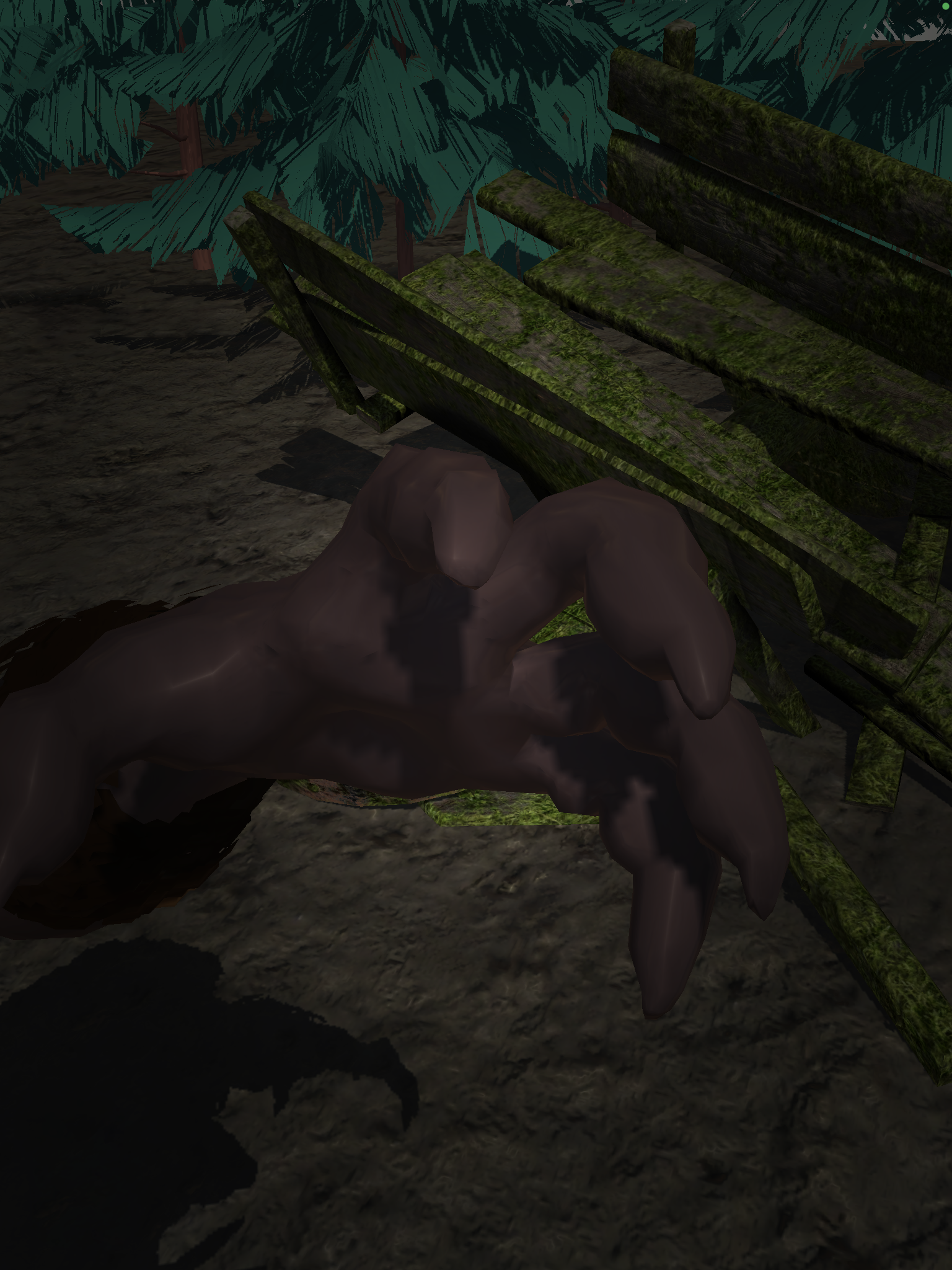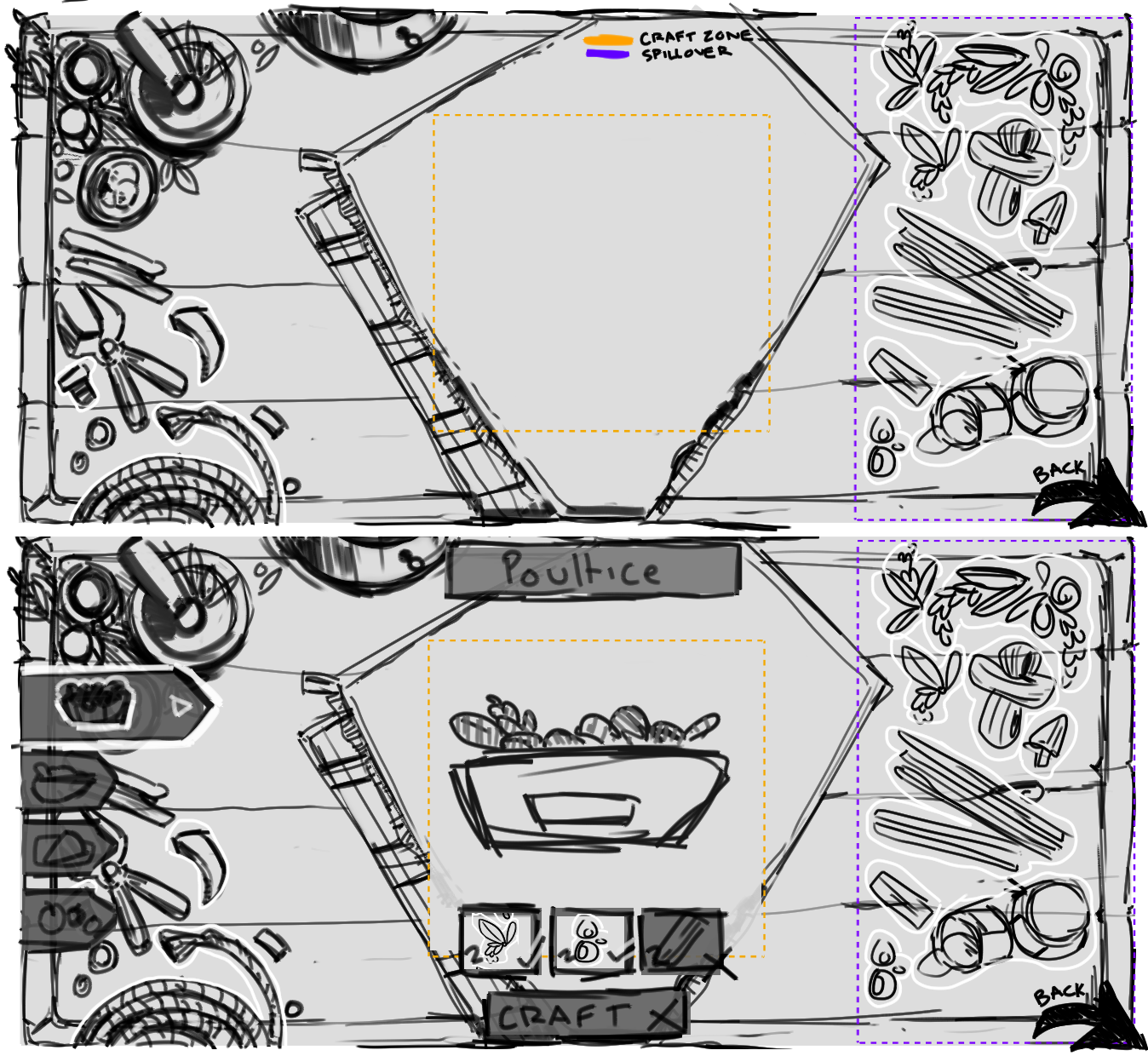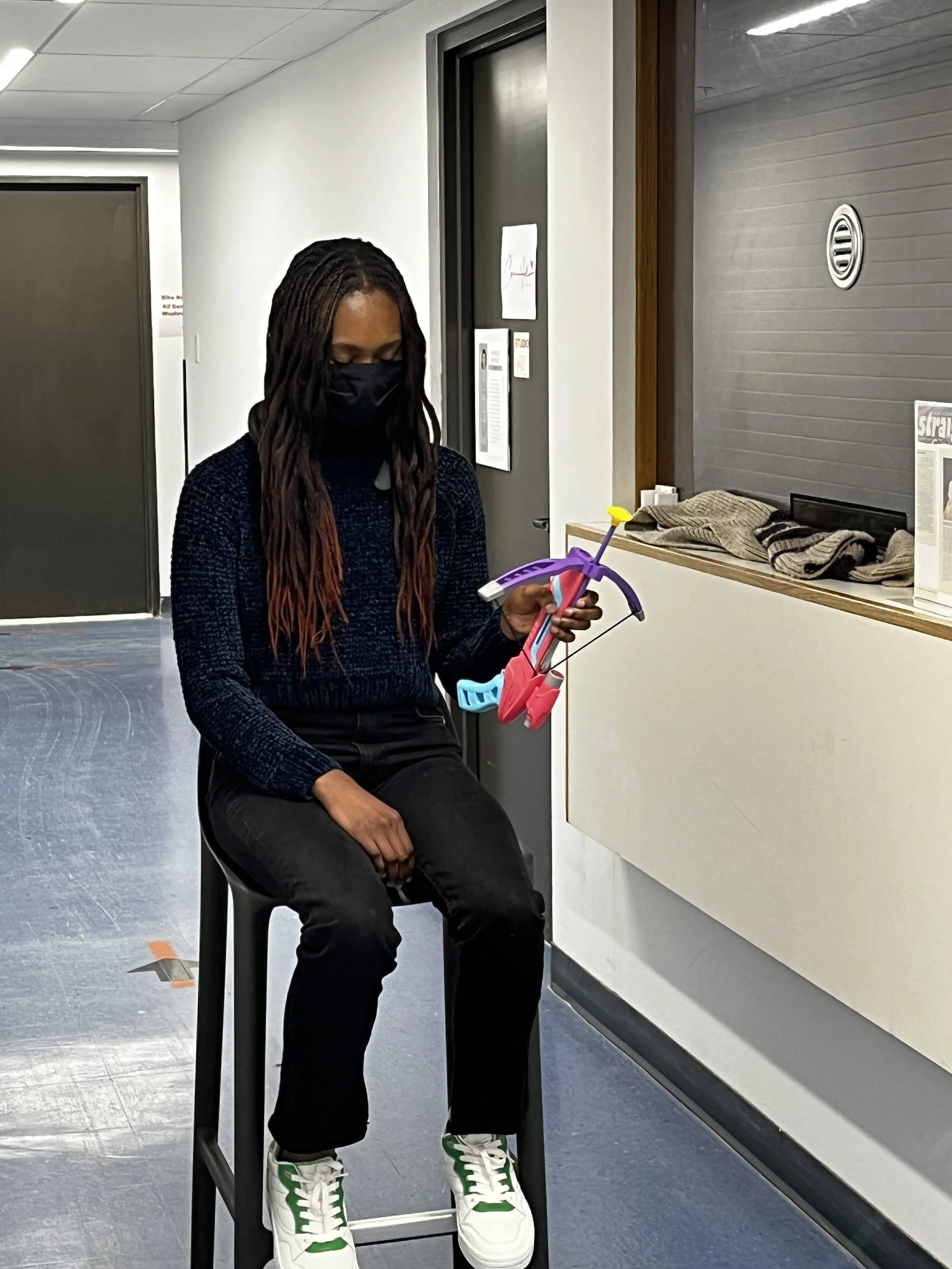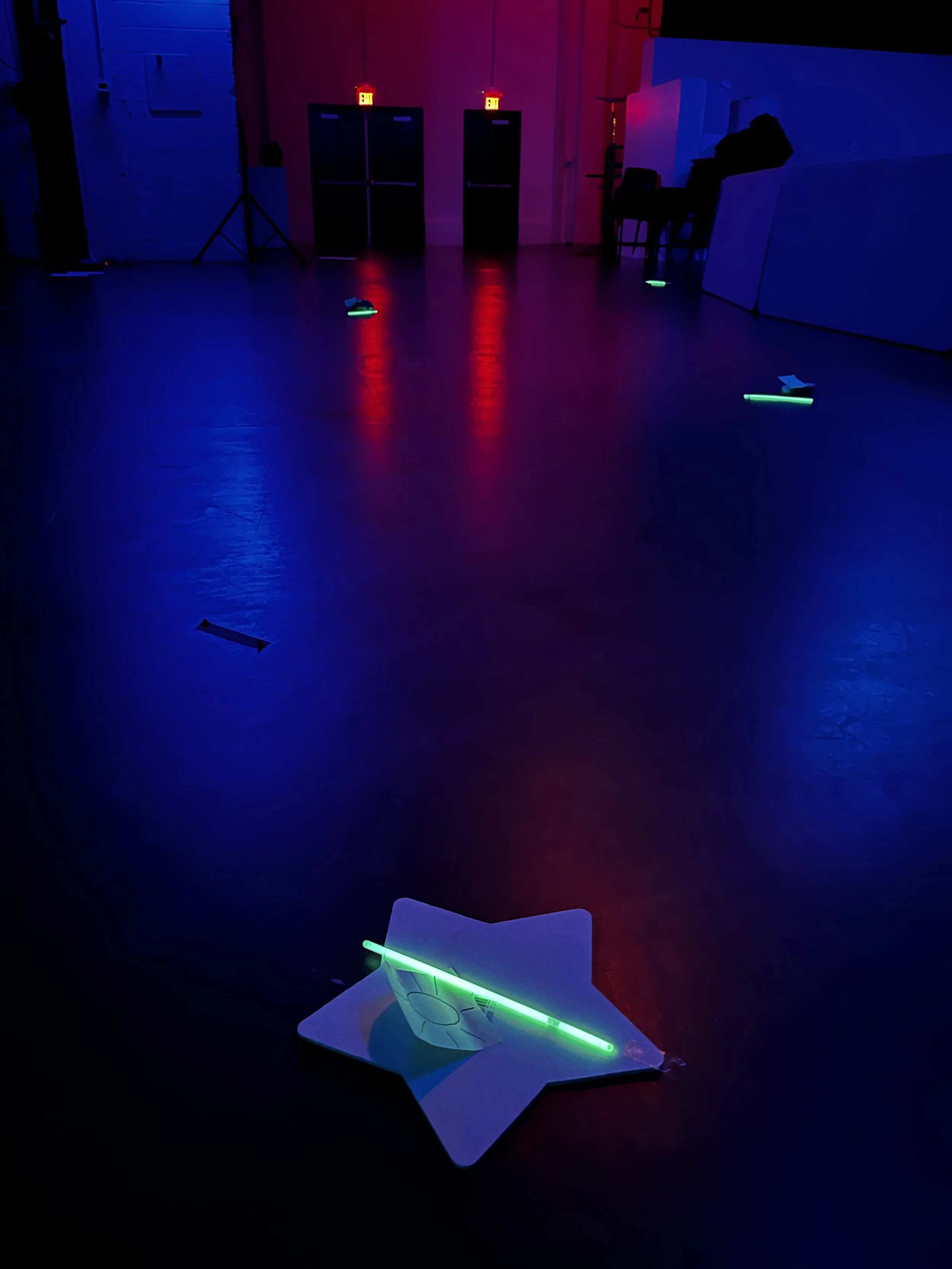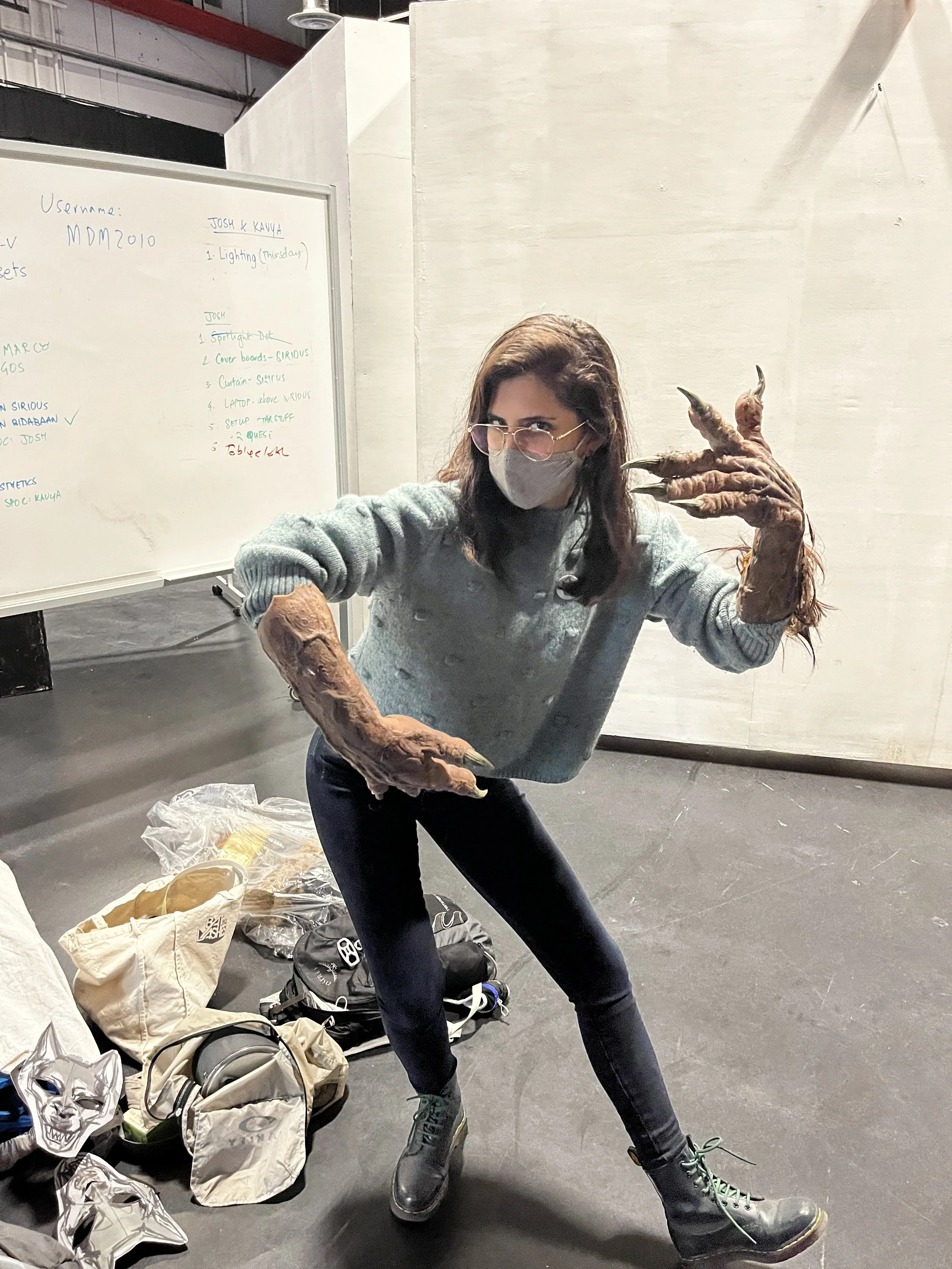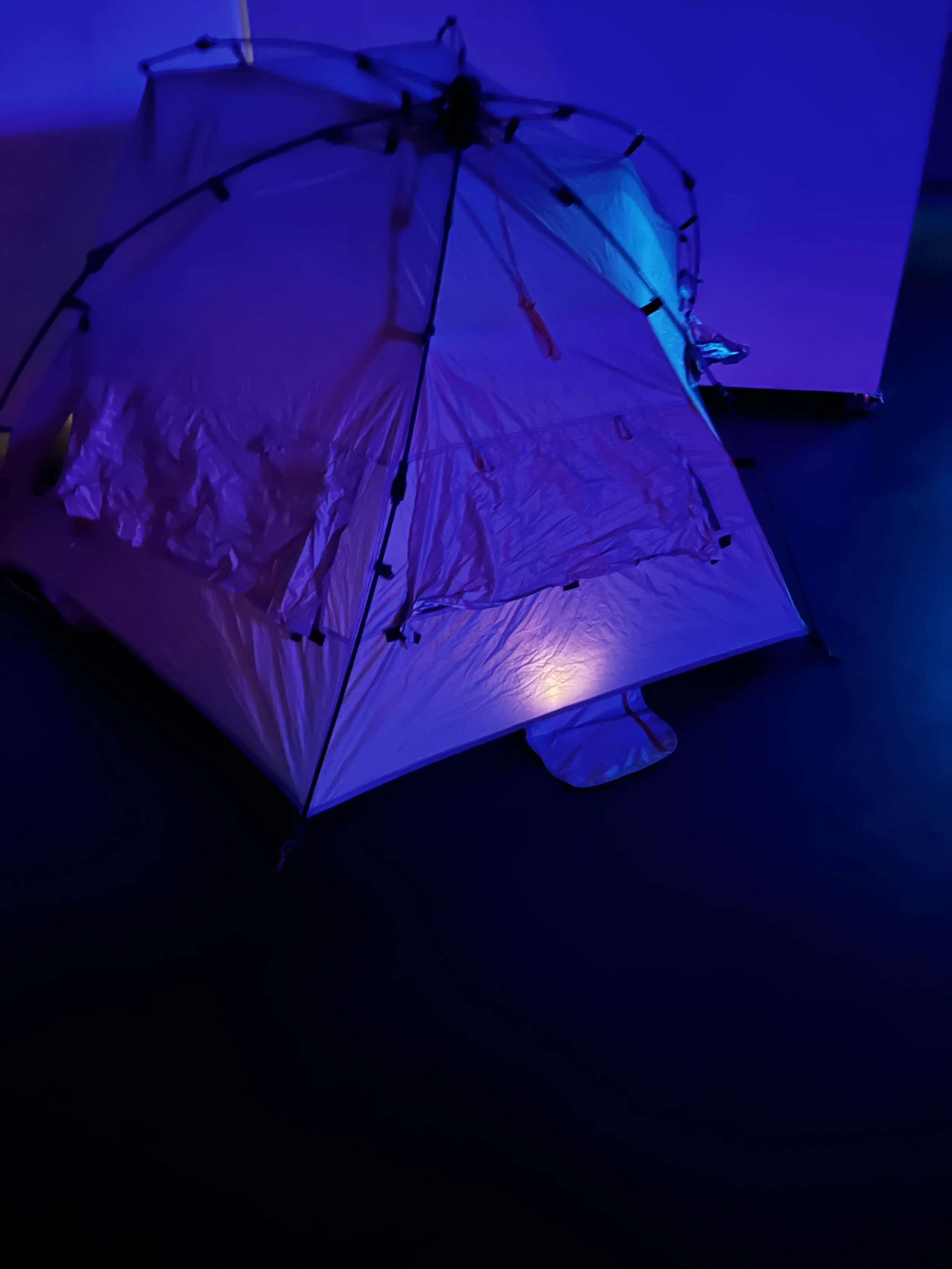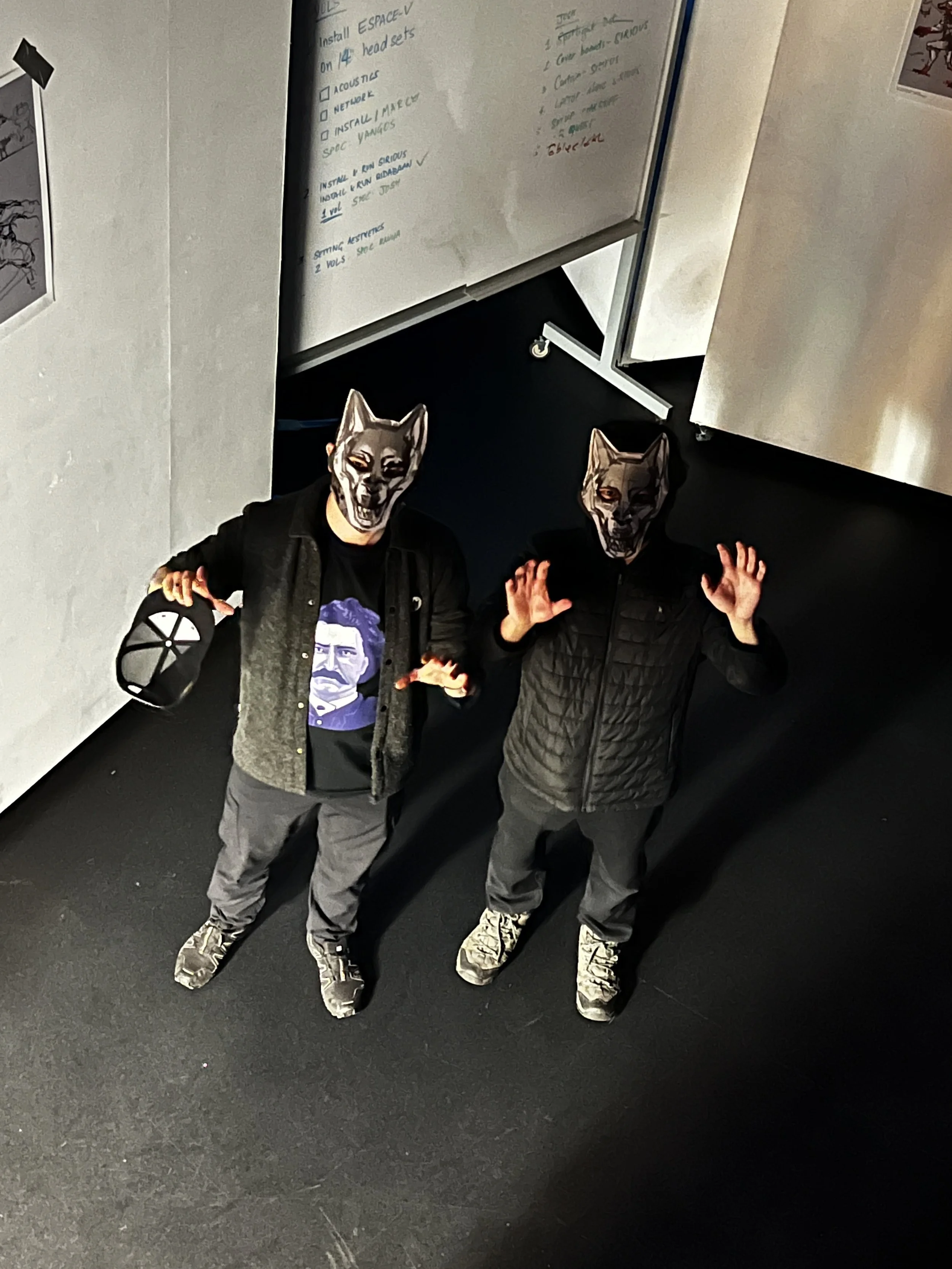augmented reality horror game
Mixed Reality meets Métis lore
Survival game blending spatial storytelling, Indigenous oral tradition, and real-time AR gameplay
Client: Hammer & Tong
My role: I worked as Creative Director
Valley of the Rougarou is a location-based augmented reality horror game built for iPadOS. Equal parts technological testbed and cultural reckoning, the prototype blends spatial computing, Indigenous storytelling, and real-world environments to immerse players in a hostile, haunted landscape.
Developed as a gallery-scale installation experience, and inspired by the folklore of the Rougarou - a shapeshifting, wolf-like creature rooted in Métis oral tradition, Valley is a proof-of-concept, designed to entertain, terrify and (gently) educate.
The Premise
You're alone. Unarmed. A faint trail leads into the darkness. Your only companions are a map, a glowing screen, and a voice whispering in your ear. Welcome to the Valley.
As players walk through a real-world installation space, their screen reveals the AR world of the Rougaverse: shadowy forests, flickering clues, and predatory creatures that are always one step behind. Survival demands stealth, scavenging, crafting, and learning - in both English and Michif.
↑ Game environs: CDM student team
↑ Photo: Hammer & Tong
AR Meets Oral Tradition
The game reimagines how horror can play out across real space, deploying:
AR encounters with animated Rougarou creatures
Spatial audio that builds dread and directs attention
Voice-activated mechanics, including spoken Michif commands to unlock tools or banish enemies
First-person flashlight play using the iPad as both lens and lantern
AR scenes were designed to be tactile and memorable, with mechanics like real-world footprint tracking, voice-activated medicine crafting, and moon-cycle-timed encounters. We activated 10+ AR interaction zones, branching audio encounters, real-world props, and a stealth system based on scent trails and shadow play.
Tech Stack & Innovation
The game was built using a tech stack optimized for immersive AR experiences on iPad Pro. Developed in Unity, the prototype utilized Apple's ARKit 5 and LiDAR capabilities to deliver accurate environment mapping, responsive spatial interactions, and object persistence. AR gameplay elements were enhanced with a custom voice recognition system, enabling players to trigger events and craft items using spoken Michif commands.
Spatial audio was integrated via ambisonic sound design, enveloping the user in a 360-degree auditory landscape. Down the road(map), we planned for game scenes to be dynamically rendered based on proximity cues, and a moon-phase system which would adjust the difficulty and behaviour of Rougarou encounters.
Supporting tools included Mapbox for real-world geolocation features, a custom UI built with Unity’s UGUI and Canvas systems, and motion capture pipelines powered by Kinect to animate Rougarou characters with performance-trained actors.
Game Loop
Learn → Harvest → Survive
The core gameplay loop hinges on progressive learning:
Learn: Understand which tools, words, and ingredients are needed to survive.
Harvest: Gather those resources from a hostile, haunted world.
Survive: Use what you've crafted to fight, flee, or heal.
The loop repeats and escalates, pushing players deeper into the Valley - and further into the lore.
Survival Horror, Reinvented
Valley flips the script on genre expectations:
Players are the prey, not the predator
Crafting is ceremonial: combining cultural knowledge with practical survival
Safe zones are earned, not given
↑ Game environs: CDM student team
Concept Art & Visual Direction
Concept development played a crucial role in shaping the Valley's terrifying atmosphere and cultural grounding. Early character sketches explored various Rougarou forms - from traditional wolf silhouettes to hybrid, decaying were-creatures designed to elicit unease and horror. Concept artist Zowie’s attention to anatomical details, fur patterns, and emotional expressiveness helped the team define distinct identities for each enemy type.
↑ Concept Art: Zowie Vicente
Partnering with Emerging Talent
As part of the development process, we partnered with a cohort of Master’s students at Vancouver’s Centre for Digital Media (CDM), who worked in sprints to prototype core gameplay mechanics. Over the course of several weeks, the CDM team helped test voice-triggered crafting, AR combat interactions, and onboarding flows - bringing fresh perspective, technical rigour, and user-first iteration to the experience. Their contributions were instrumental in validating early gameplay loops and informing design refinements. Testing initial low-fi gameplay in the large CDM Hangar was one of the theatrical highlights of the project.
↑ Game environs: CDM student team
Cultural Mechanics
Rather than layering story on top of mechanics, this game integrates them. Players can
Collect ingredients to cook traditional medicine and food (like pemmican)
Speak Michif to activate items or unlock areas
Discover journal fragments from lost travelers
Craft weapons from materials tied to Métis practices
To ensure cultural teachings were respectfully represented, the team collaborated directly with Elders and Knowledge Keepers throughout development. This included a Métis Elder fluent in Northern Michif and Cree, guiding language integration and translation, and a Métis artisan and Knowledge Keeper, contributing expertise in traditional floral beadwork, plant medicine, and harvesting practices.
These collaborations followed cultural protocols, and ensured that what appeared in-game was not only authentic, but carried with it the permissions, context, and spirit of the communities it represents.
Outcomes
Though not a commercial title, Valley of the Rougarou achieved several milestones:
Completed an end-to-end AR survival horror prototype
Integrated Métis storytelling and language into core mechanics
Conducted UX and playtesting across multiple formats (digital, physical, and hybrid)
Positioned the Rougaverse as a transmedia IP with future expansion across podcast, film, and web
The project also made meaningful progress toward its cultural goals: offering a visceral, gamified lens into Métis identity and knowledge systems, and introducing Indigenous horror as a genre with both mainstream potential and deep community roots.
Legacy
Valley of the Rougarou is both haunting and hopeful - utilising the thrill of the horror genre in immersive, innovative ways to spark education, preserve memory, and celebrate cultural identity.
CORE TEAM
Willow Browne, Junior Designer
Ghazal (Q) Jenab, Interaction + UI Design
James Kingstone, Game Designer, Hammer & Tong
Binoodha Kunnath, UX Direction
Nick Liang, Technical Director
Sean Ronan, Producer, Hammer & Tong
Somit Sharma, RnD, Assistant Producer
Zowie Vicente, Concept Artist
Jordan Waunch, Cultural Content
With guidance from:
Stella Johnson, Michif Language and Cultural Protocol
Lisa Shepherd, Métis Art and Plant Medicine
CDM STUDENT TEAM
Jason Elliott, Faculty Supervisor
Stanly Jeong, Game Designer, 3D Artist
Nikolaj Langberg, Developer
Wilson Leung, Animator
Lily Li, Project Manager
Karl Qian, 2/3D Artist, Developer
Zhun Zhang, 3D Generalist, Sound Designer



